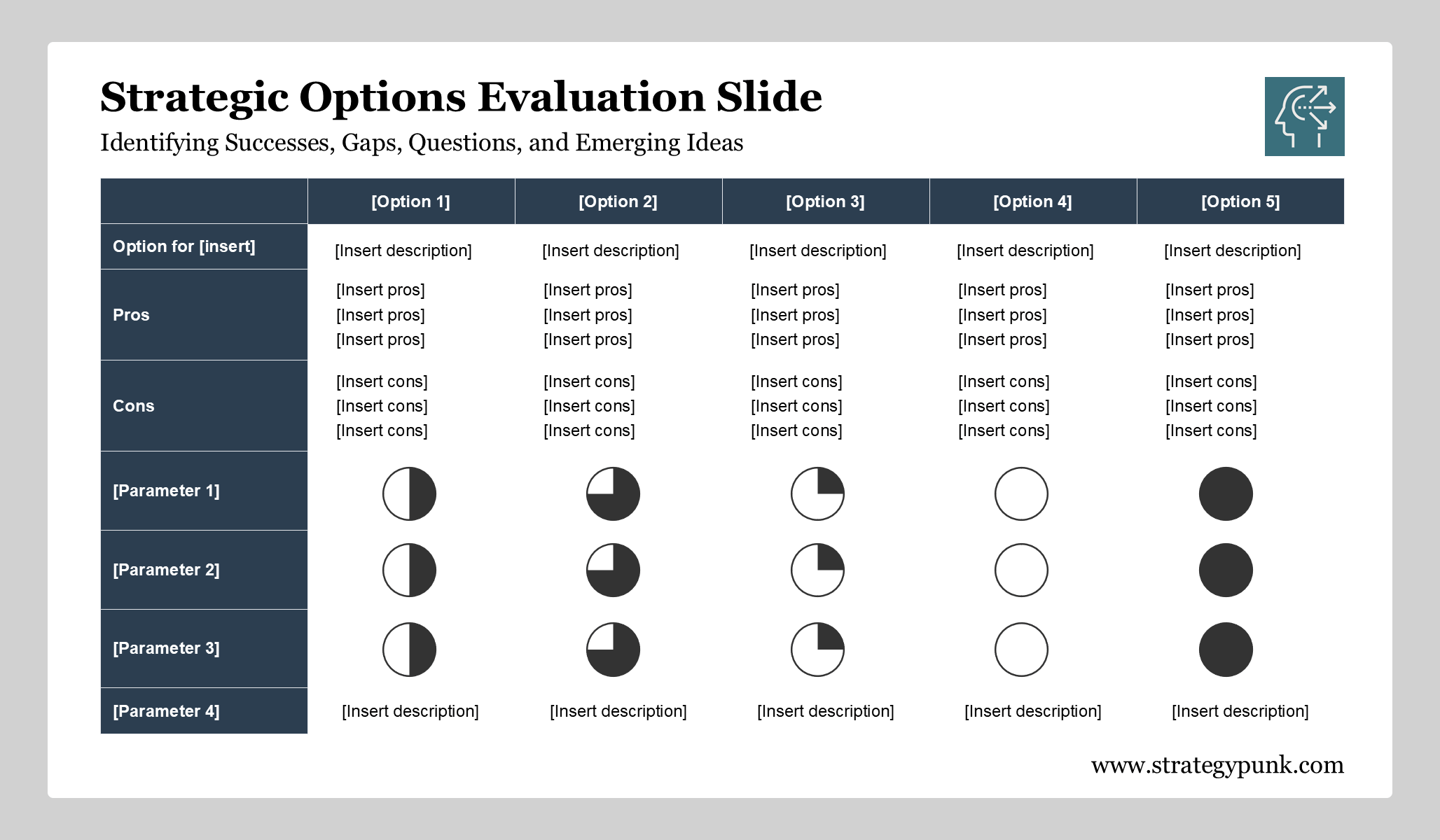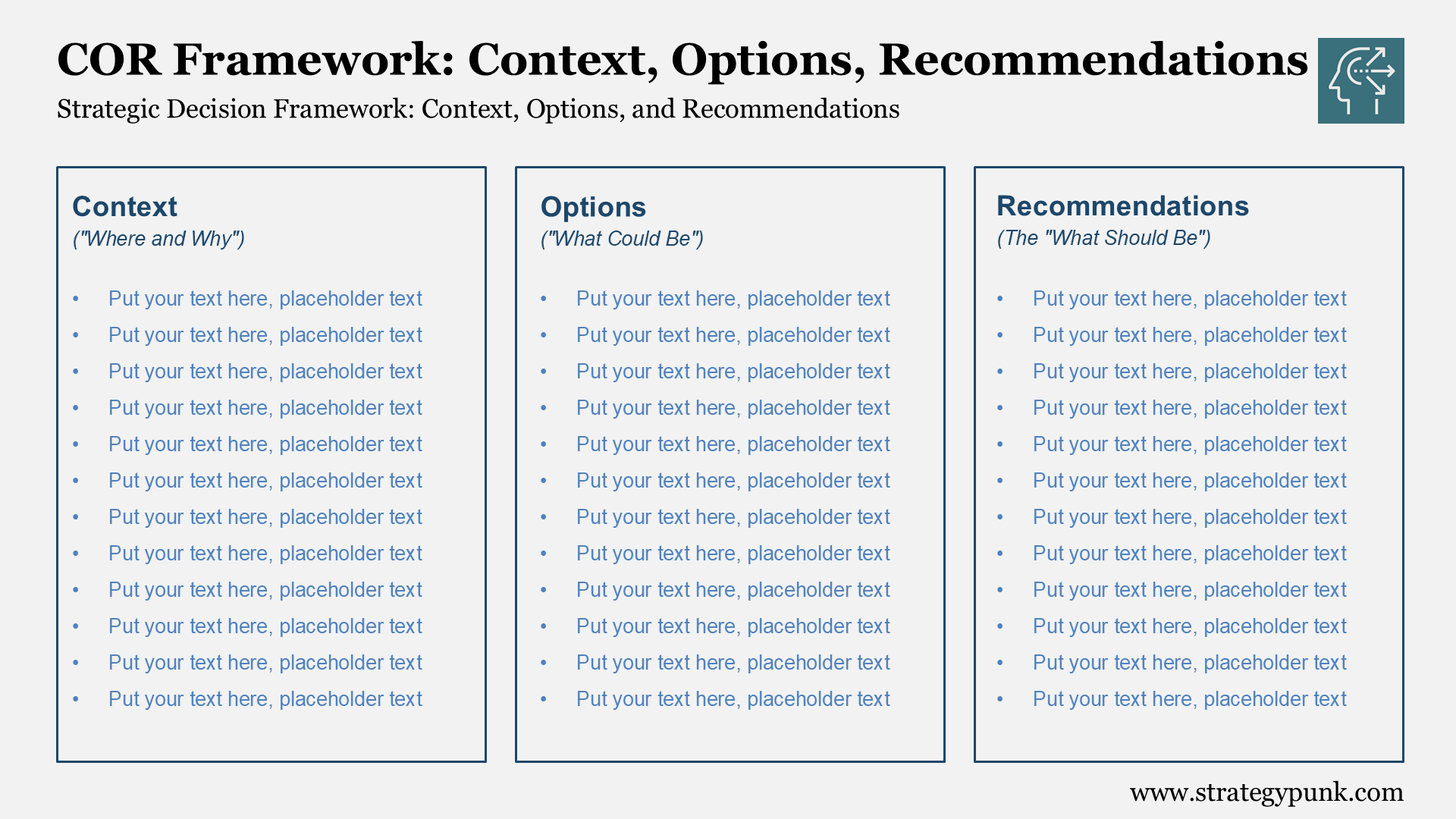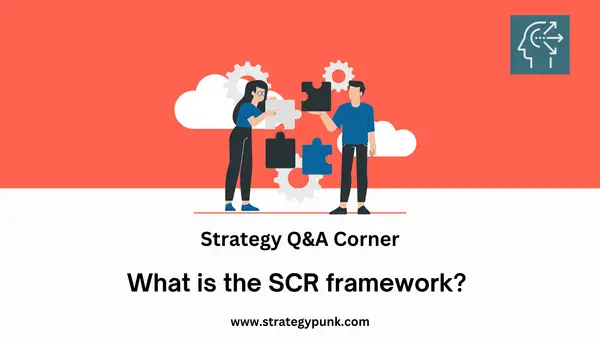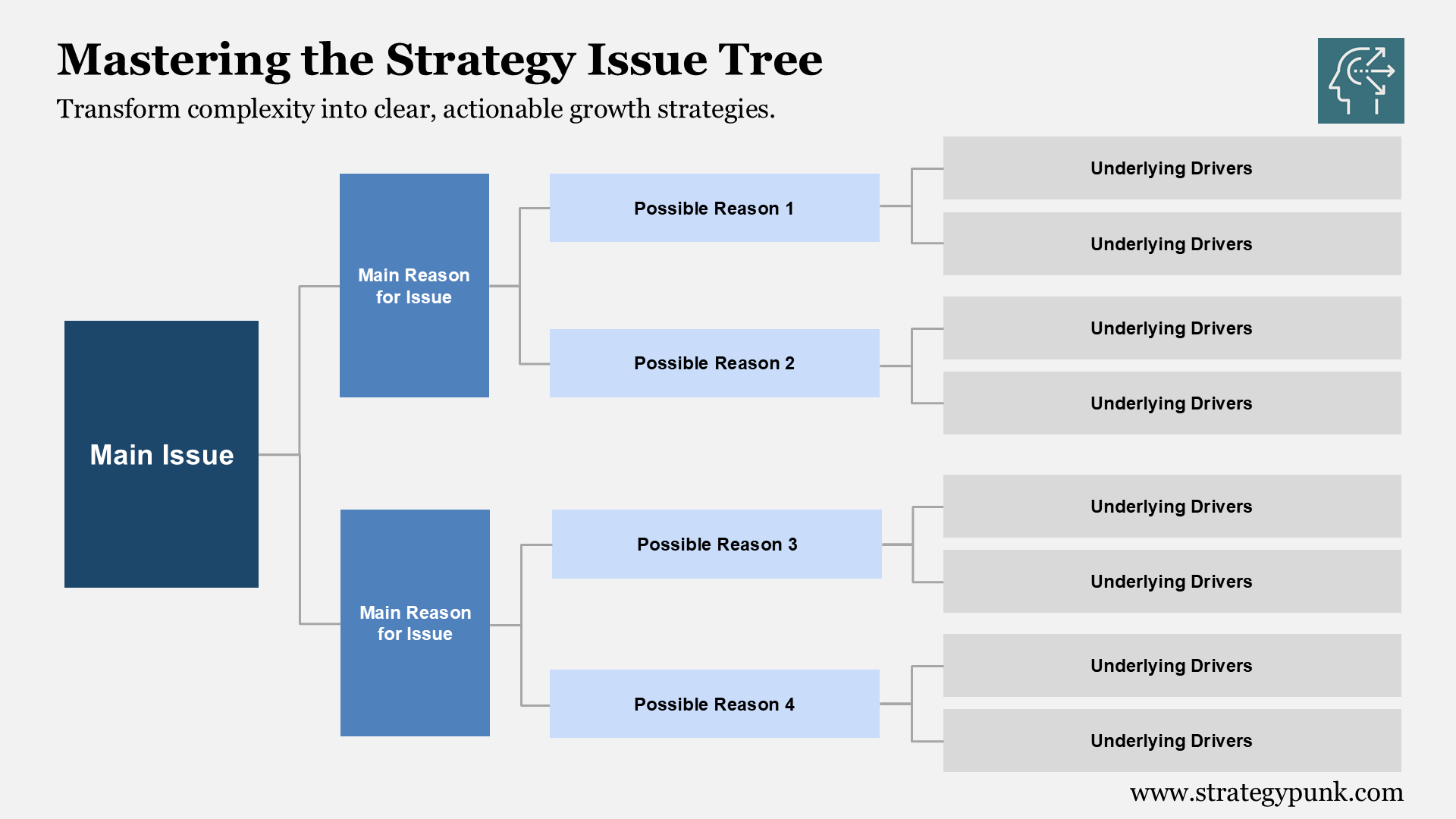7 Steps to Create a Strategic Business Roadmap (FREE PPT)
7 Steps to Create a Strategic Business Roadmap + FREE PPT Template – Download Now for Clear, Actionable Planning!

How to Create a Strategic Business Roadmap
1. Identify the Problem
Description: Every successful business begins by addressing a specific problem. Understanding the gap in the market or the pain points of potential customers sets the foundation for your venture.
Milestone: Problem Identified
Tasks:
- Conduct market research to understand industry trends.
- Perform a competitor analysis to identify strengths and weaknesses.
- Engage in customer interviews to gather firsthand insights.
Timeline: [Specify Date]
Action Step: Dedicate time to thoroughly researching and validating the problem your business aims to solve. This will ensure that your efforts are directed toward a genuine need in the market.
2. Define Goals
Description: Setting clear, measurable goals keeps you on track and provides benchmarks for success. Both short-term and long-term goals are essential for sustained growth.
Milestone: SMART Goals Set (Quarterly and Yearly)
Tasks:
- Organize goal alignment sessions with your team.
- Schedule quarterly check-ins to assess progress and recalibrate if necessary.
Timeline: [Start Date - End Date]
Action Step: Formulate ambitious and attainable goals using the SMART criteria (Specific, Measurable, Achievable, Relevant, and Time-bound).
3. Break Down Goals
Description: Large goals can be overwhelming. Breaking them into smaller, actionable steps makes them more manageable and less daunting.
Milestone: Goals Segmented into Actionable Steps
Tasks:
- Map out each step in a project management tool like Notion.
- Schedule milestones to track progress incrementally.
Timeline: [Date Range for Completion]
Action Step: Create a detailed plan that outlines each step required to achieve your goals, assigning responsibilities where necessary.
4. Outline Tasks
Description: Specific tasks are the building blocks of your milestones. Clearly defining these tasks ensures that everything runs smoothly.
Milestone: Task List for Each Milestone
Tasks:
- Assign tasks to team members based on their strengths and expertise.
- Prepare the necessary resources to facilitate task completion.
- Build timelines to keep everyone accountable.
Timeline: [Estimated Task Duration]
Action Step: Develop a comprehensive task list for each milestone, ensuring clarity in expectations and deadlines.
5. Set Timelines
Description: Deadlines create a sense of urgency and help prioritize tasks. Realistic timelines are crucial to maintain momentum without causing burnout.
Milestone: Tasks Linked with Specific Deadlines
Tasks:
- Set individual deadlines for each task.
- Create calendar reminders and notifications.
Timeline: [Weekly/Monthly Date Ranges]
Action Step: Use tools like Google Calendar or project management software to keep track of deadlines and send reminders.
6. Visualize the Roadmap
Description: A visual representation of your roadmap makes it easier to comprehend complex plans and communicate them to stakeholders.
Milestone: Roadmap Chart/Visual Completed
Tasks:
- Utilize digital tools like Notion or other project management software.
- Alternatively, create physical planners or boards for a tangible roadmap.
Timeline: [Date to Finalize]
Action Step: Design a visual roadmap that highlights goals, milestones, tasks, and timelines, making it accessible and easily understandable for the entire team.
7. Review & Adjust
Description: The business landscape is ever-changing. Regular reviews allow you to adapt your roadmap to new information and evolving circumstances.
Milestone: Check-in Schedule for Roadmap Adjustments
Tasks:
- Conduct regular review sessions with your team.
- Gather stakeholder feedback to inform adjustments.
- Iterate on tasks and strategies based on new data.
Timeline: [Quarterly Date]
Action Step: Establish a routine for reviewing and updating your roadmap, ensuring it remains relevant and effective.
Following this structured approach, you create a living document that charts your path to success and adapts as your business grows.
A strategic business roadmap is a constant reminder of where you're headed and how you plan to get there, keeping everyone aligned and motivated.
Key Considerations When Executing Your Business Roadmap
Involving Stakeholders in the Planning Process
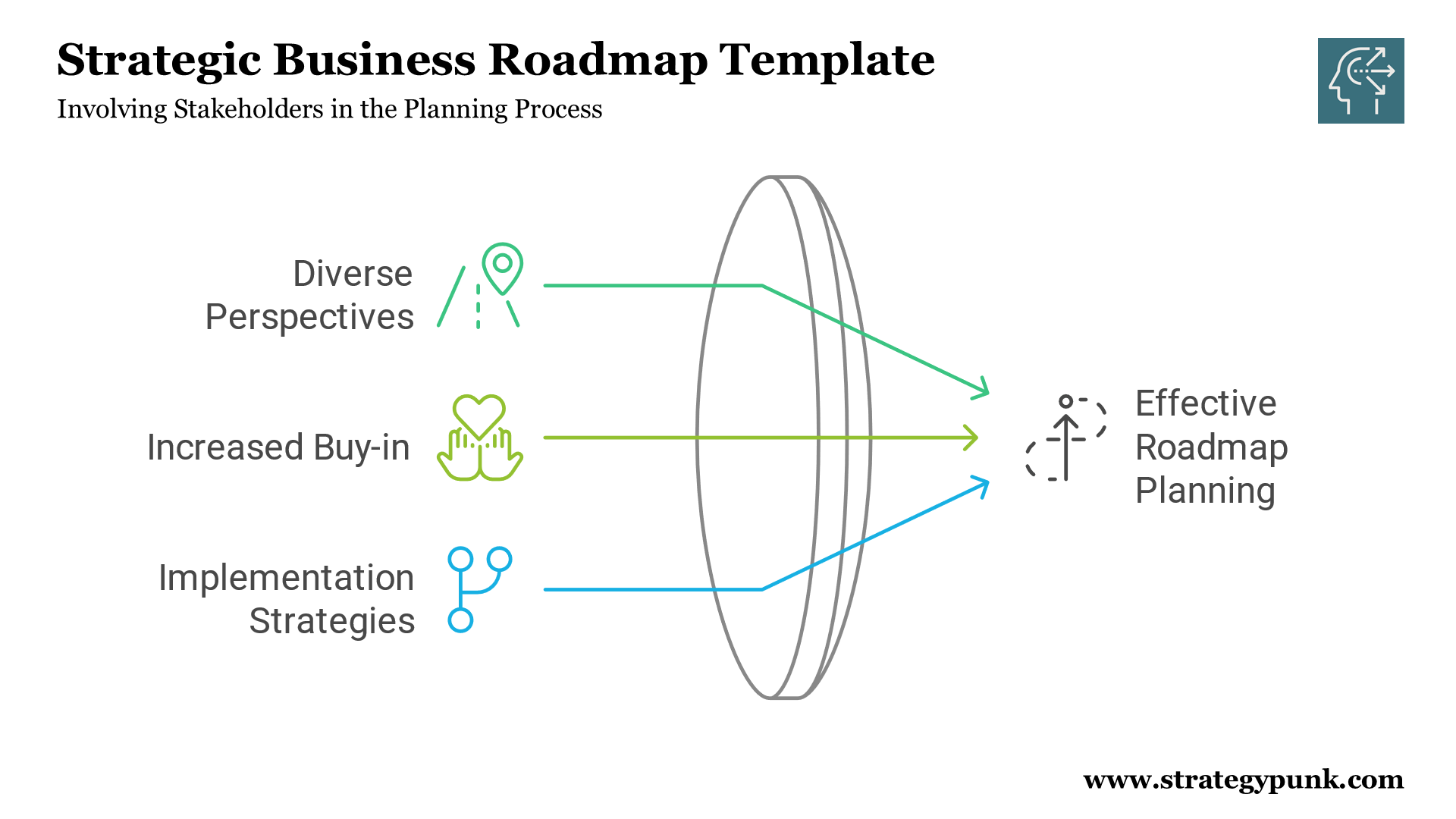
Highlight the benefits of engaging various stakeholders—such as employees, investors, and customers—in creating your roadmap:
- Diverse Perspectives: Gaining valuable insights that enrich planning.
- Increased Buy-in: Fostering a sense of ownership and support for initiatives.
- Implementation Strategies: Methods for effective stakeholder communication and involvement.
Leveraging Tools and Technology
Discuss the role of technology in enhancing roadmap creation and execution:
- Project Management Software: An overview of tools like Asana, Trello, or Monday.com.
- Visualization Platforms: How tools like Lucidchart or Microsoft Visio aid visual planning.
- Collaboration Solutions: The importance of platforms like Slack or Microsoft Teams for team communication.
- Choosing the Right Tools: Tips on selecting software that fits your team's needs.
Identifying and Avoiding Common Pitfalls
Provide guidance on potential mistakes and how to steer clear of them:
- Overambitious Goals: Risks of setting unrealistic objectives.
- Inflexibility: Dangers of not adapting to changing circumstances.
- Communication Gaps: Issues arising from poor dissemination of the roadmap.
- Preventative Measures: Strategies to mitigate these risks.
Effective Communication of the Roadmap
Emphasize the necessity of sharing the roadmap clearly with all parties involved:
- Transparency Benefits: Building trust and clarity within the team.
- Alignment Across Departments: Ensuring cohesive efforts towards common goals.
- Communication Channels: Best practices for meetings, updates, and accessible documentation.
Embracing Flexibility and Adaptability
Discuss why adaptability is vital in strategic planning:
- Dynamic Markets: Responding to rapid changes in the business environment.
- Continuous Improvement: Using feedback and data to refine your roadmap.
- Adaptive Strategies: Techniques for building flexibility into your plans.
Prioritization Techniques
Offer methods for determining task and milestone importance:
- Eisenhower Matrix: Categorizing tasks by urgency and importance.
- MoSCoW Method: Classifying tasks as Must have, Should have, Could have, Won't have.
- Resource Allocation: Focusing efforts on high-impact activities.
Risk Management Strategies
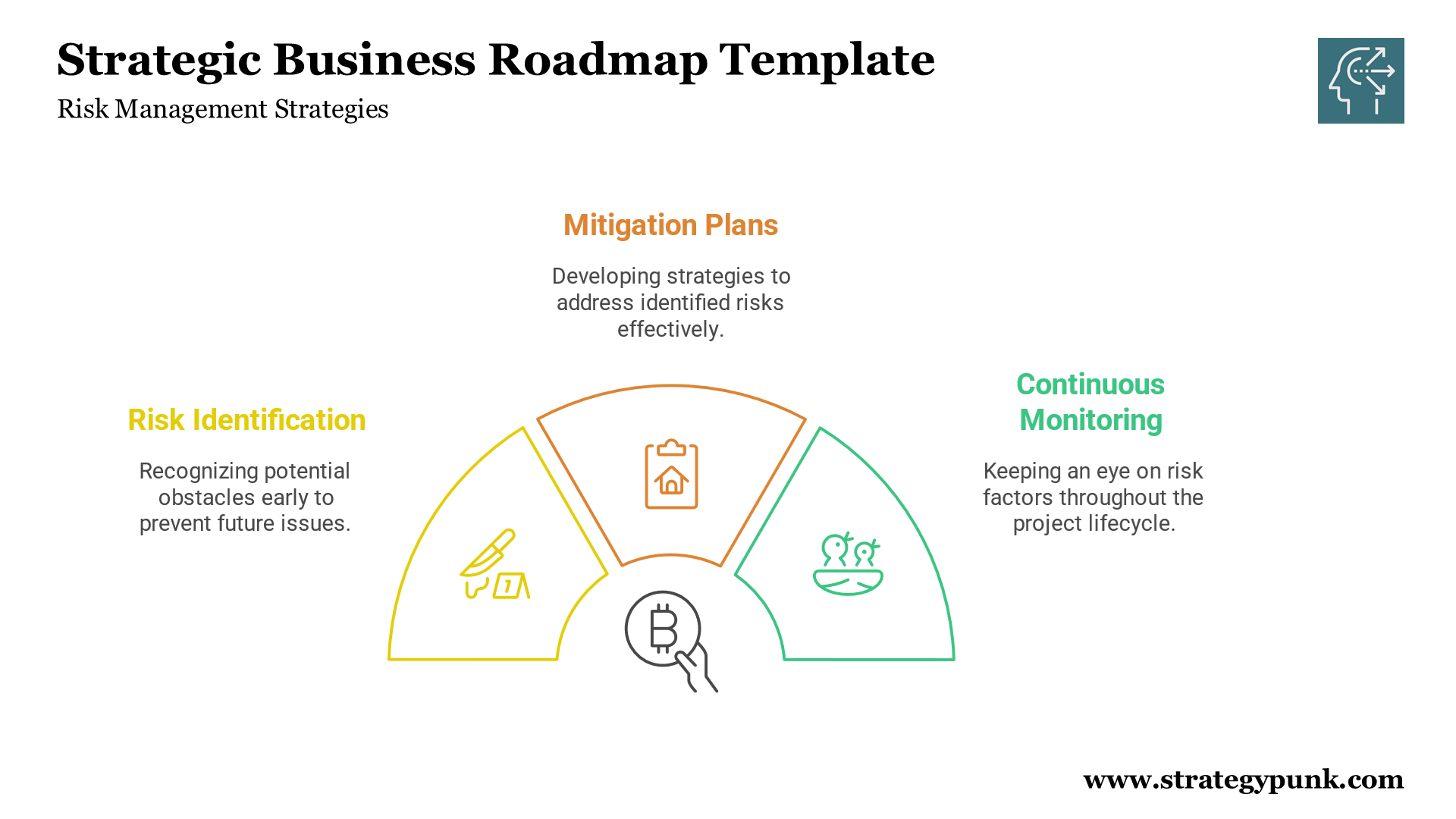
Stress the significance of anticipating and mitigating risks:
- Risk Identification: Recognizing potential obstacles early.
- Mitigation Plans: Developing strategies to address identified risks.
- Continuous Monitoring: Keeping an eye on risk factors throughout the project lifecycle.
Understanding Team Dynamics and Culture
Examine how internal culture affects roadmap implementation:
- Collaborative Environment: Fostering open communication and idea sharing.
- Accountability Structures: Establishing clear responsibilities and expectations.
- Cultural Alignment: Ensuring the roadmap reflects the team's values and work styles.


